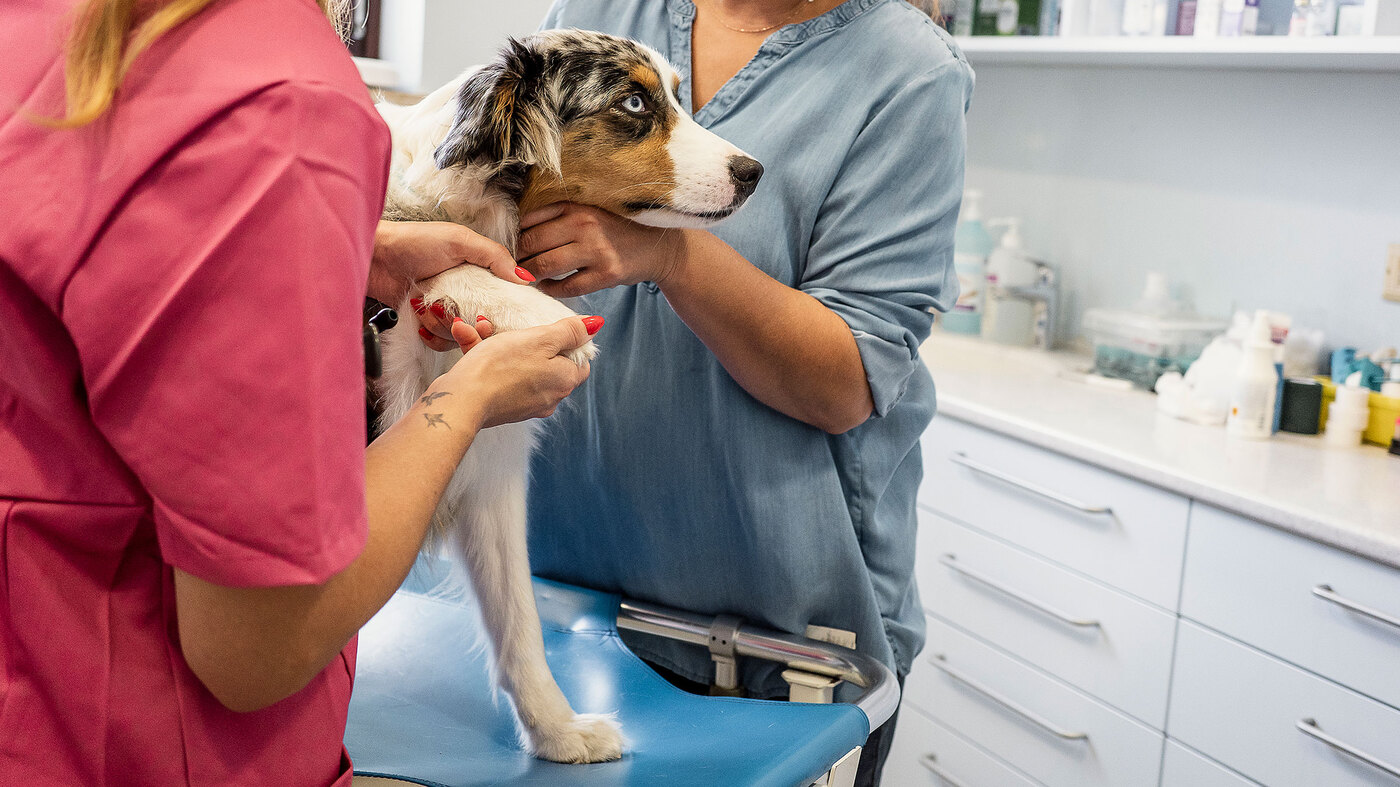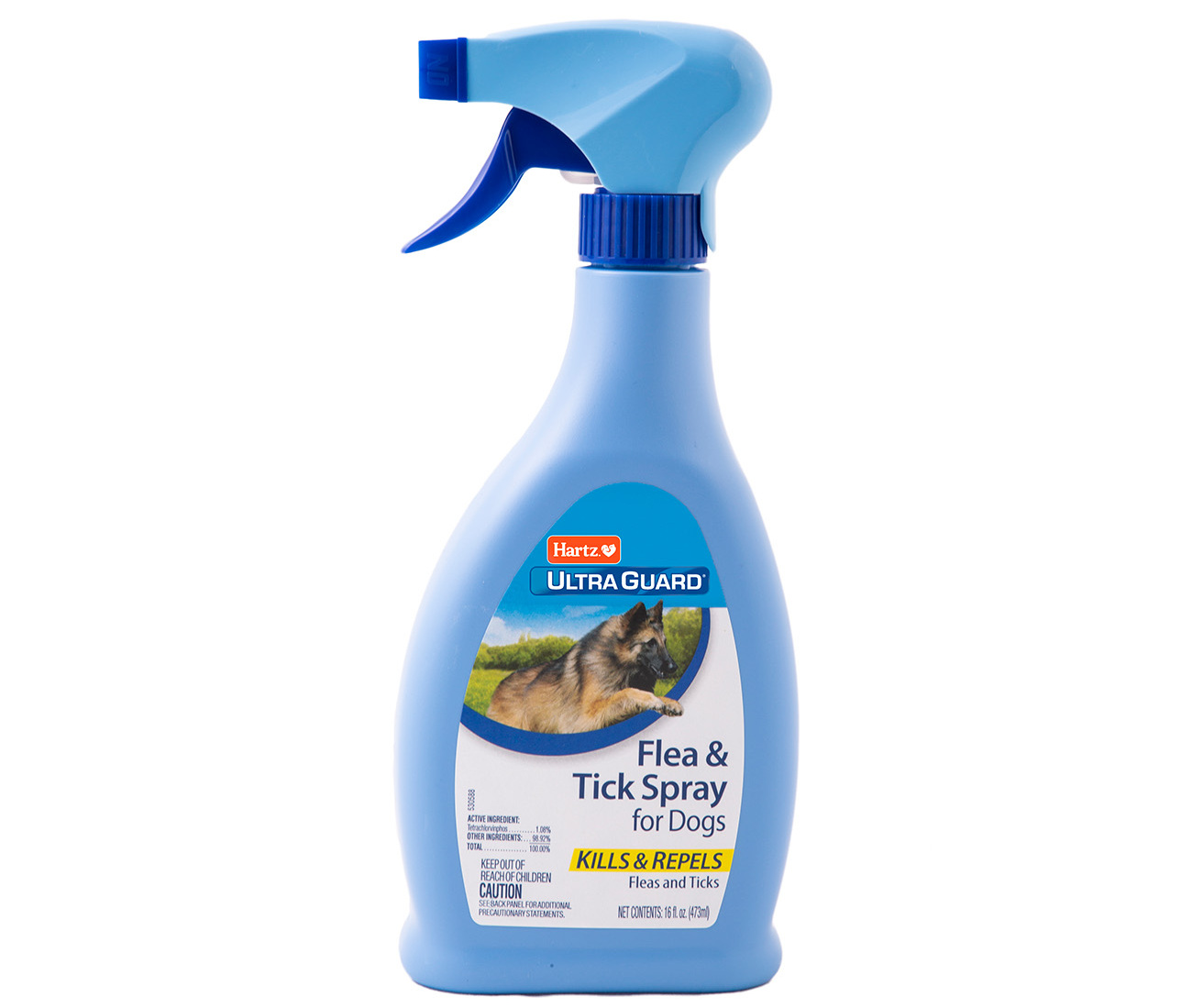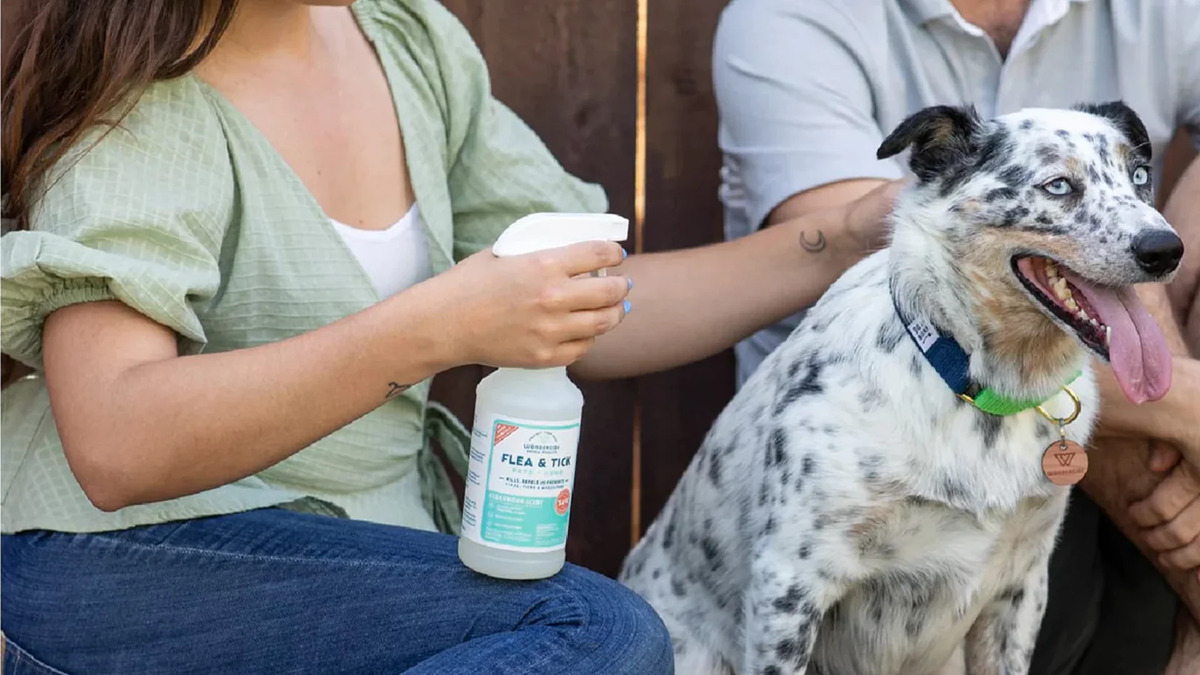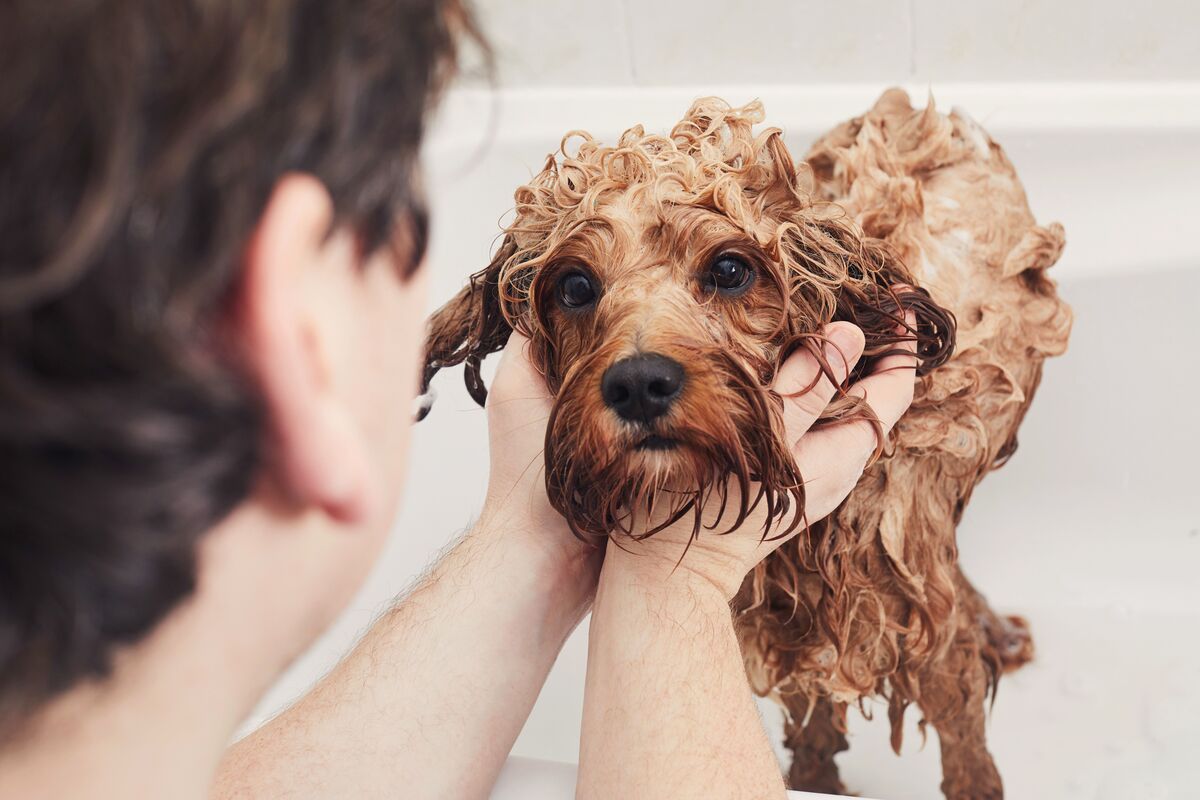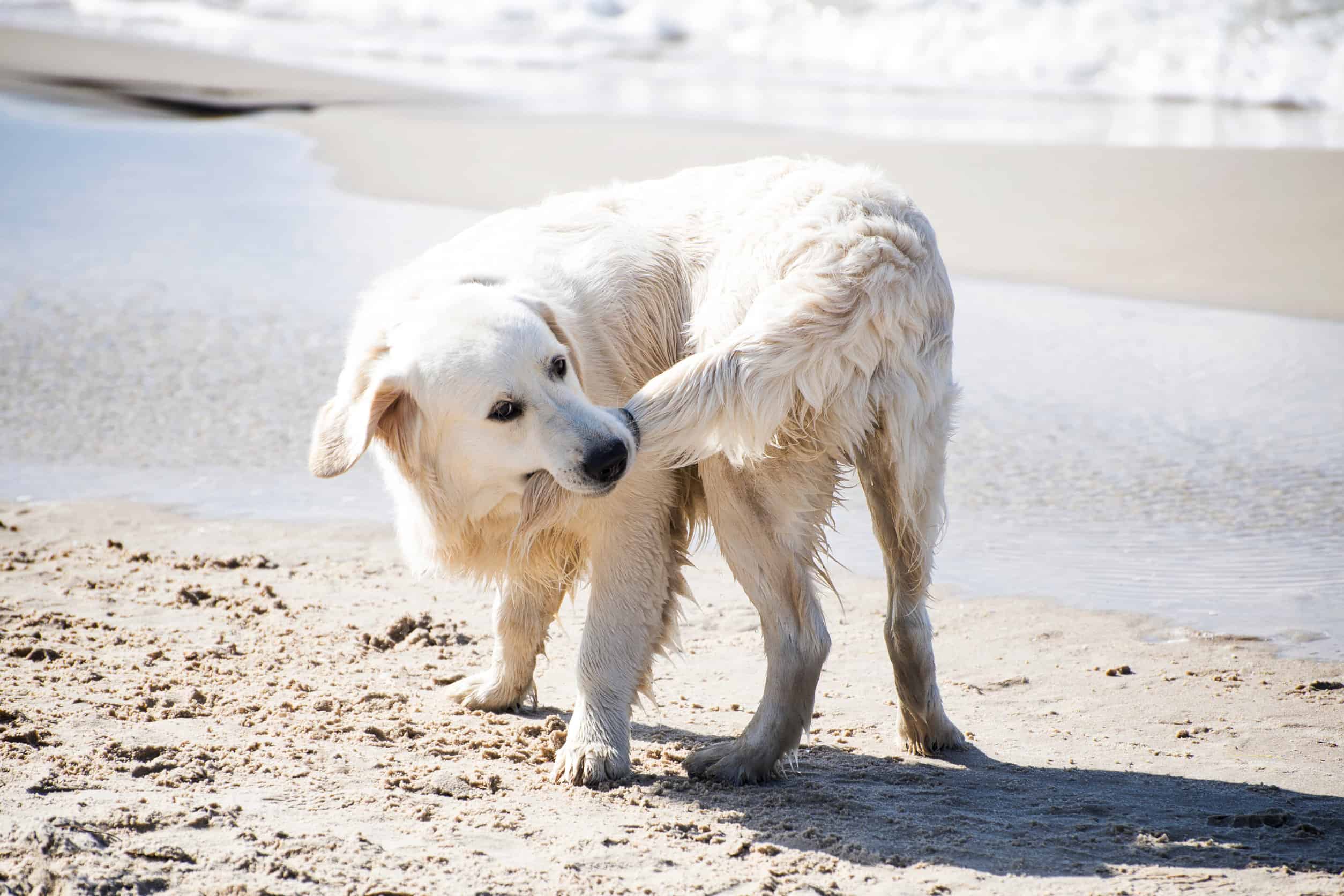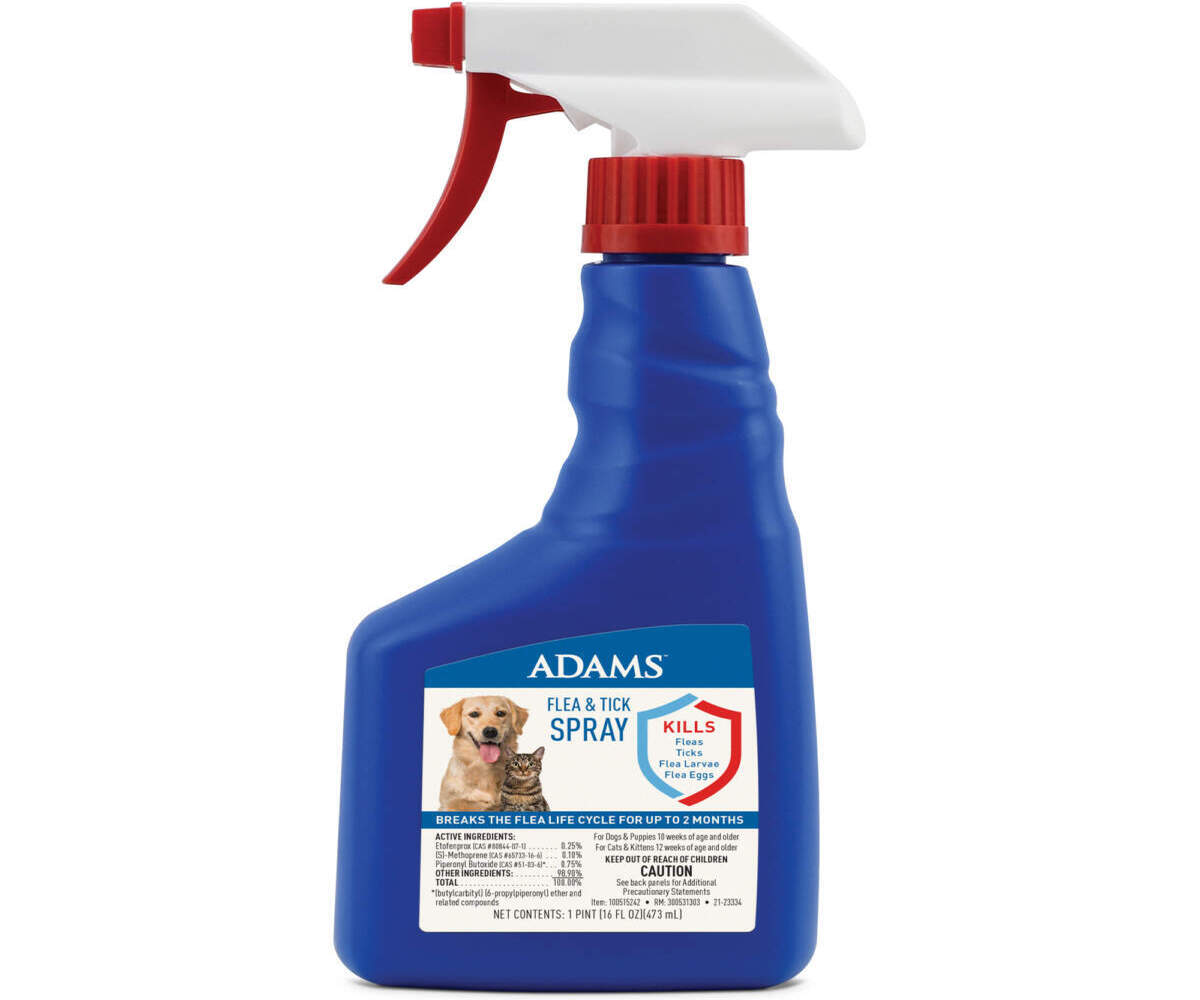Home>Health & Wellness>Common Health Issues>What Can You Spray On A Dog To Kill Fleas
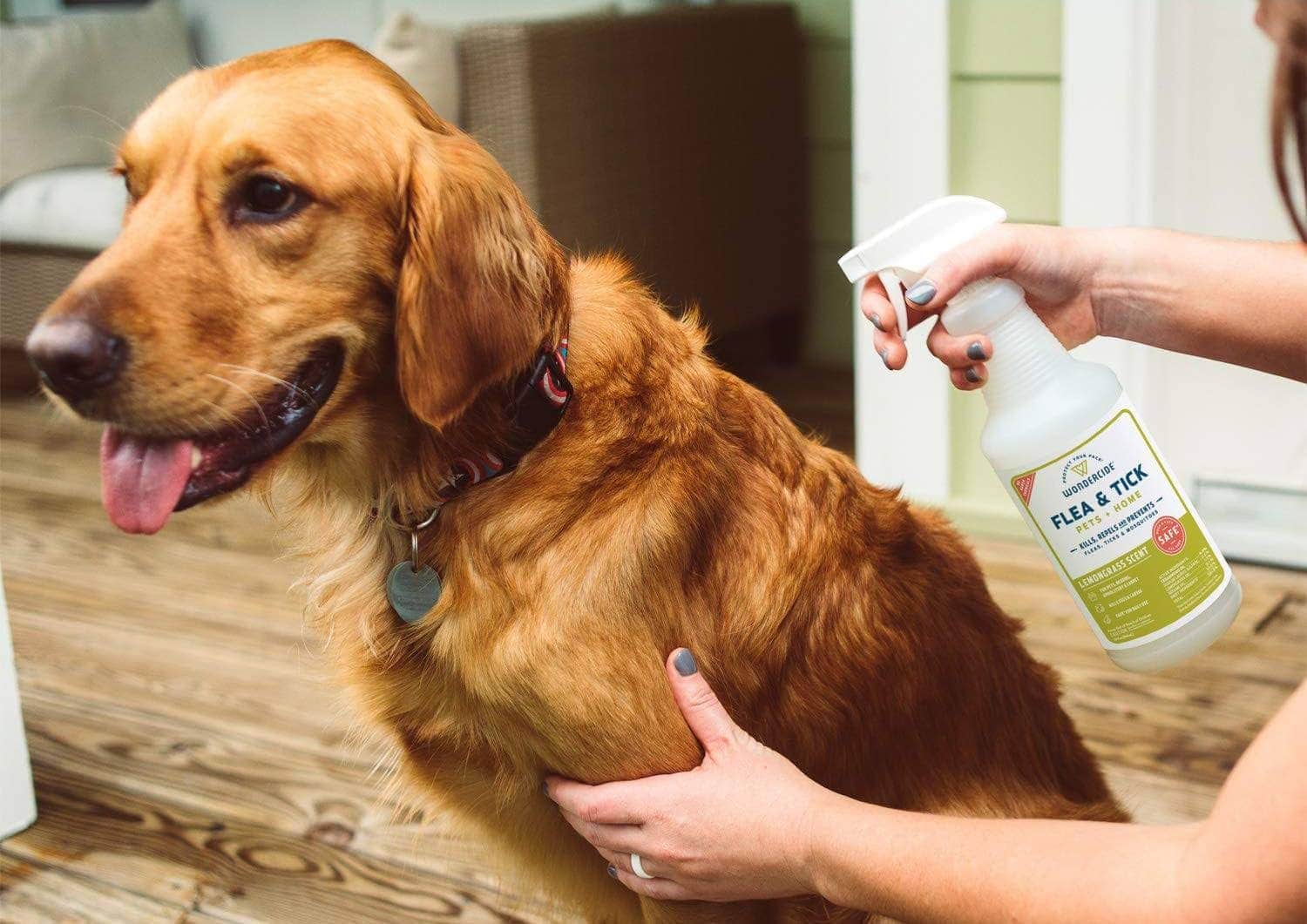

Common Health Issues
What Can You Spray On A Dog To Kill Fleas
Modified: February 21, 2024
Discover effective solutions for common health issues in dogs, including what you can spray on a dog to kill fleas. Keep your furry friend healthy and happy with our expert tips.
(Many of the links in this article redirect to a specific reviewed product. Your purchase of these products through affiliate links helps to generate commission for Pawsomeoldies.com, at no extra cost. Learn more)
Table of Contents
Introduction
Fleas are a common nuisance for dogs and can cause discomfort, itching, and even health issues if left untreated. As a responsible pet owner, it's crucial to address flea infestations promptly to ensure the well-being of your furry friend. One effective method to combat fleas is by using flea spray specifically formulated for dogs. These sprays are designed to kill fleas on contact and provide residual protection to prevent re-infestation.
When it comes to choosing the right flea spray for your dog, it's essential to consider the safety and effectiveness of the product. Understanding the potential dangers of fleas on dogs is crucial in realizing the importance of proactive flea control measures. Additionally, exploring natural alternatives to chemical flea sprays can offer a gentler approach to flea prevention while minimizing exposure to potentially harmful ingredients.
In this comprehensive guide, we will delve into the world of flea sprays for dogs, shedding light on common ingredients found in these products, as well as natural alternatives that prioritize the well-being of your canine companion. Furthermore, we will discuss the proper application of flea spray on dogs to ensure optimal results and safety. By the end of this article, you will be equipped with the knowledge to make informed decisions regarding flea control for your beloved pet.
Understanding the dangers of fleas on dogs
Fleas pose a significant threat to the health and well-being of dogs, making it imperative for pet owners to comprehend the potential dangers associated with these tiny parasites. Beyond causing incessant itching and discomfort, fleas can lead to a myriad of health issues for dogs. One of the most common problems resulting from flea infestations is flea allergy dermatitis (FAD), an allergic reaction to flea saliva. Dogs suffering from FAD may experience intense itching, hair loss, and inflamed skin, leading to secondary infections if left untreated.
Moreover, fleas are capable of transmitting various diseases to dogs, including tapeworm infestations. When a dog ingests an infected flea during grooming, it can lead to the development of tapeworms within the digestive tract, causing digestive disturbances and weight loss. Additionally, severe flea infestations can result in anemia, particularly in young or small dogs, due to the loss of blood from multiple flea bites.
Furthermore, constant scratching and biting at flea-infested areas can lead to skin abrasions and open sores, making the dog susceptible to bacterial infections. These infections can exacerbate the discomfort experienced by the dog and may necessitate medical intervention to address the underlying issues.
In some cases, particularly with severe infestations, dogs may exhibit behavioral changes, such as restlessness, irritability, and decreased appetite, as a result of the distress caused by fleas. This can significantly impact the dog's overall well-being and quality of life.
It is crucial for pet owners to recognize the potential dangers of fleas on dogs and take proactive measures to prevent and eliminate infestations. By understanding the risks associated with fleas, pet owners can prioritize the health and comfort of their canine companions, ensuring a happy and thriving life free from the perils of flea infestations.
Common ingredients in flea sprays for dogs
Flea sprays for dogs typically contain a variety of active and inactive ingredients aimed at effectively combating fleas while ensuring the safety of the treated pet. Understanding these common ingredients is essential for pet owners seeking to make informed choices when selecting a flea spray for their dogs.
-
Pyrethroids: These synthetic chemicals are derived from natural pyrethrins, which are insecticidal compounds found in chrysanthemum flowers. Pyrethroids, such as permethrin and phenothrin, are widely used in flea sprays for their potent insecticidal properties. They target the nervous system of fleas, leading to paralysis and eventual death. While effective, it's important to use pyrethroid-based flea sprays with caution, as some dogs may be sensitive to these chemicals.
-
Insect Growth Regulators (IGRs): IGRs, such as methoprene and pyriproxyfen, are commonly included in flea sprays to disrupt the life cycle of fleas. These compounds inhibit the development of flea eggs and larvae, preventing them from maturing into adult fleas. By incorporating IGRs into flea sprays, pet owners can effectively address not only existing fleas but also prevent future infestations by targeting multiple stages of the flea life cycle.
-
Etofenprox: This active ingredient is another synthetic pyrethroid that acts as an insecticide, targeting fleas upon contact. Etofenprox is known for its rapid knockdown effect, swiftly incapacitating fleas upon application. Its inclusion in flea sprays contributes to the swift eradication of existing fleas on the dog's coat.
-
Linalool and Citronella: These natural extracts are often utilized in flea sprays for their repellent properties. Linalool, derived from plants such as lavender and basil, emits a floral scent that repels fleas, while citronella, obtained from lemongrass, acts as a natural insect repellent. These botanical ingredients not only help deter fleas but also contribute pleasant fragrances to the flea spray.
-
Emollients and Moisturizers: In addition to active insecticidal and repellent ingredients, flea sprays may contain emollients and moisturizers, such as aloe vera and oatmeal extracts. These components help soothe and condition the dog's skin, providing relief from any irritation caused by flea bites and enhancing the overall health of the coat.
Understanding the common ingredients found in flea sprays for dogs empowers pet owners to make informed decisions when selecting products for flea control. By considering the efficacy and safety of these ingredients, pet owners can prioritize the well-being of their dogs while effectively combating flea infestations.
Natural alternatives to chemical flea sprays
In addition to chemical flea sprays, pet owners have the option to explore natural alternatives for flea control that prioritize the well-being of their dogs. These natural remedies offer a gentler approach to flea prevention while minimizing exposure to potentially harmful chemicals. By incorporating natural ingredients and holistic methods, pet owners can effectively combat fleas while promoting the overall health of their canine companions.
Essential Oils
Certain essential oils are known for their natural flea-repelling properties. Lavender, peppermint, eucalyptus, and cedarwood essential oils are popular choices for creating homemade flea sprays. When diluted with water or a carrier oil, such as coconut or jojoba oil, these essential oils can be applied to a dog's coat to help repel fleas. However, it's important to use essential oils with caution and in appropriate dilutions, as some dogs may be sensitive to certain oils.
Read more: What Can You Use For Fleas On Dogs
Apple Cider Vinegar
Apple cider vinegar is a versatile natural remedy that can be used to deter fleas. When diluted with water, apple cider vinegar can be sprayed onto a dog's coat or added to their drinking water. The acidic nature of apple cider vinegar creates an environment that is less hospitable to fleas, helping to repel these pests. Additionally, regular use of apple cider vinegar can contribute to a healthy skin and coat for the dog.
Diatomaceous Earth
Diatomaceous earth is a fine powder made from the fossilized remains of diatoms, a type of algae. This natural substance is effective at dehydrating and killing fleas upon contact. When lightly dusted onto a dog's coat and bedding, diatomaceous earth can help eliminate fleas without the use of harsh chemicals. It's important to use food-grade diatomaceous earth and to avoid inhalation during application.
Herbal Flea Collars
Herbal flea collars offer a natural alternative to traditional flea collars that rely on chemical insecticides. These collars are infused with natural ingredients such as citronella, eucalyptus, and lavender to repel fleas and other pests. By utilizing the natural repellent properties of these herbs, herbal flea collars provide a non-toxic and aromatic solution for flea control.
Regular Grooming and Cleaning
Maintaining a regular grooming and cleaning routine for dogs is essential for flea prevention. Regular baths using gentle, natural shampoos can help remove and deter fleas. Additionally, frequent vacuuming of the dog's living areas and washing of bedding can help eliminate flea eggs and larvae, reducing the risk of infestation.
By incorporating these natural alternatives into their flea control regimen, pet owners can effectively combat fleas while minimizing the use of chemical flea sprays. It's important to consult with a veterinarian before using any new flea control methods, especially for dogs with existing health conditions or sensitivities. With a holistic approach to flea prevention, pet owners can prioritize the well-being of their dogs while effectively managing flea infestations.
How to properly apply flea spray on a dog
Proper application of flea spray is crucial to ensure its effectiveness and the safety of your dog. Here's a step-by-step guide to applying flea spray on your dog:
-
Choose the Right Product: Select a flea spray specifically formulated for dogs. Ensure that the product is suitable for your dog's age, size, and any existing health conditions. Read the product label and follow the manufacturer's instructions.
-
Prepare Your Dog: Before applying the flea spray, brush your dog's coat to remove any tangles and mats. This will help the spray reach the skin and ensure thorough coverage. If your dog is particularly sensitive or anxious, consider using a calming technique, such as gentle massage or positive reinforcement, to create a relaxed environment.
-
Protect Your Dog's Eyes and Ears: Use a soft cloth or cotton balls to shield your dog's eyes and ears while applying the flea spray. This will prevent any discomfort or irritation caused by accidental contact with the spray.
-
Apply the Flea Spray: Hold the flea spray bottle at a distance as recommended on the product label. Starting from the back of the neck, spray the product onto your dog's coat, working your way towards the tail. Be sure to cover the entire body, including the legs, underbelly, and tail. Avoid saturating the coat excessively, and pay special attention to areas where fleas are commonly found, such as the base of the tail and behind the ears.
-
Massage the Spray into the Coat: After applying the flea spray, gently massage it into your dog's coat. This helps distribute the product evenly and ensures that it reaches the skin, where fleas and their eggs may be present.
-
Allow the Coat to Dry Naturally: Allow the flea spray to air dry on your dog's coat. Avoid using a hairdryer or towel to dry the spray, as this may diminish its effectiveness. During the drying process, prevent your dog from licking or grooming the treated areas to prevent ingestion of the product.
-
Monitor Your Dog: Observe your dog for any signs of adverse reactions after applying the flea spray. If you notice any unusual behavior, excessive scratching, or signs of discomfort, consult your veterinarian immediately.
-
Follow the Recommended Frequency: Adhere to the recommended frequency of application as specified on the product label. Overuse of flea spray can be harmful to your dog, so it's important to follow the guidelines provided by the manufacturer.
By following these steps, you can effectively apply flea spray on your dog, helping to combat fleas and protect your pet from infestations. Remember to consult your veterinarian if you have any concerns about using flea spray on your dog, especially if your dog has pre-existing health conditions or is on medication.
Conclusion
In conclusion, addressing flea infestations is a crucial aspect of maintaining the health and well-being of our canine companions. Fleas pose significant dangers to dogs, ranging from discomfort and itching to more severe health issues such as flea allergy dermatitis, anemia, and the transmission of diseases. Understanding the potential risks associated with fleas underscores the importance of proactive flea control measures.
When it comes to combating fleas on dogs, flea sprays play a vital role in eradicating existing infestations and preventing re-infestation. By understanding the common ingredients found in flea sprays, pet owners can make informed decisions to ensure the safety and effectiveness of the products they use on their dogs. From pyrethroids and insect growth regulators to natural repellents and skin-conditioning agents, flea sprays are designed to target fleas while prioritizing the well-being of the treated pet.
Furthermore, exploring natural alternatives to chemical flea sprays provides pet owners with holistic options for flea control. Essential oils, apple cider vinegar, diatomaceous earth, and herbal flea collars offer non-toxic and aromatic solutions that align with the well-being of dogs. By incorporating these natural remedies into their flea control regimen, pet owners can effectively combat fleas while minimizing exposure to potentially harmful chemicals.
Proper application of flea spray is essential to ensure its effectiveness and the safety of dogs. By following a step-by-step approach, pet owners can apply flea spray in a manner that maximizes its benefits while minimizing any potential risks to their pets.
In essence, the well-being of our dogs is paramount, and addressing flea infestations is an integral part of responsible pet ownership. By understanding the dangers of fleas, exploring the options available in flea sprays, considering natural alternatives, and applying flea spray properly, pet owners can effectively protect their dogs from the perils of flea infestations. Prioritizing the health and comfort of our canine companions through proactive flea control measures ensures that they can lead happy, healthy lives free from the discomfort and dangers posed by fleas.

